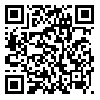Volume 35, Issue 247 (8-2025)
J Mazandaran Univ Med Sci 2025, 35(247): 142-149 |
Back to browse issues page
Download citation:
BibTeX | RIS | EndNote | Medlars | ProCite | Reference Manager | RefWorks
Send citation to:



BibTeX | RIS | EndNote | Medlars | ProCite | Reference Manager | RefWorks
Send citation to:
Sobouti F, Abedi P, Aryana M, Kargosha G, Salehi M. Report of a Rare Case of Complete Crown and Root Fusion Anomaly in Posterior Mandibular Teeth. J Mazandaran Univ Med Sci 2025; 35 (247) :142-149
URL: http://jmums.mazums.ac.ir/article-1-21807-en.html
URL: http://jmums.mazums.ac.ir/article-1-21807-en.html
Abstract: (83 Views)
Dental anomalies refer to any deviation or disorder affecting the natural characteristics of teeth, which can be observed in both primary and permanent dentition. One such anomaly is fusion, characterized by the union of two adjacent teeth during their development, resulting in a single, enlarged dental structure. This condition can have various clinical and aesthetic implications. This case report examines the fusion of the second and third molars in the mandible and provides an analysis of the etiology, diagnosis, and management of this rare condition. Our patient was a 46-year-old woman who presented to the orthodontic office complaining of food impaction caused by the gap between her upper central incisors and the space between the second premolar and the second molar on the left side of the mandible. During the oral examination, the orthodontist observed that the second and third molars on the right side of the mandible were abnormally fused, resulting in an altered appearance. The initial diagnosis by the orthodontist was dental fusion, which was confirmed following a re-evaluation by an Oral and Maxillofacial Medicine specialist, based on clinical and radiographic findings. This fusion has not resulted in any clinical complications in the patient, but it may predispose to issues such as caries or periodontal disease in the future. Nevertheless, the collection of information and a comprehensive examination of the jaws using non-invasive diagnostic methods are essential for accurate diagnosis and ongoing monitoring of the patient’s condition. This approach will facilitate the proactive planning of necessary treatment measures and ensure clear communication with the patient.
Type of Study: Case Report |
Subject:
Dentistry
Send email to the article author
| Rights and permissions | |
 |
This work is licensed under a Creative Commons Attribution-NonCommercial 4.0 International License. |







